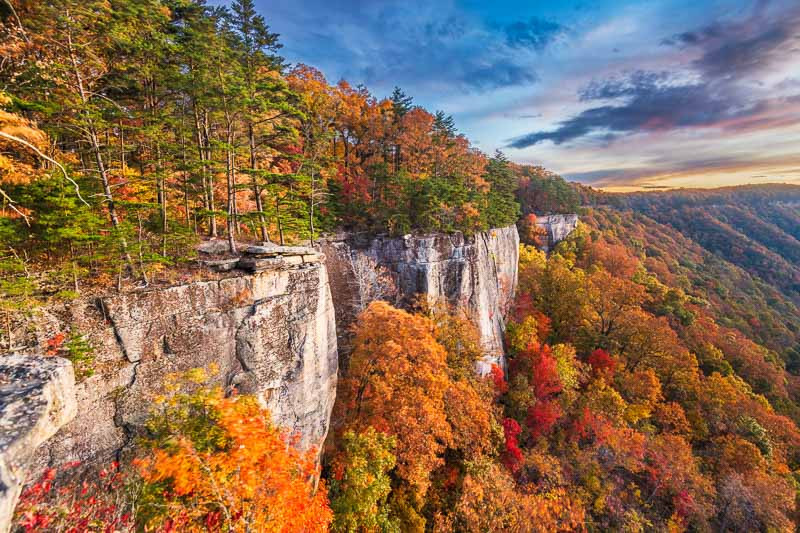West Virginia Native Plants
West Virginia, known as the “Mountain State,” harbors a rich diversity of native plants due to its varying elevation, topography, and soil types, ranging from deciduous forests to highland meadows.
- In the deciduous forests, you can find an abundance of trees like Sugar Maple (Acer saccharum), White Oak (Quercus alba), and the iconic American Chestnut (Castanea dentata). Underneath, a lush understory thrives, with species like Spicebush (Lindera benzoin) and Pawpaw (Asimina triloba).
- The mountainous regions are characterized by evergreens like Red Spruce (Picea rubens) and Eastern Hemlock (Tsuga canadensis), with understory plants such as the Mountain Laurel (Kalmia latifolia) and Catawba Rhododendron (Rhododendron catawbiense). Among the rocks, ferns like the Christmas Fern (Polystichum acrostichoides) find their homes.
- Highland meadows are adorned with a variety of grasses, sedges, and wildflowers, including the vibrant New England Aster (Symphyotrichum novae-angliae) and Goldenrod (Solidago spp.), providing vital habitats for pollinators. Wetlands and riparian areas harbor unique species like the Swamp Milkweed (Asclepias incarnata) and Soft Rush (Juncus effusus).
Planting these natives supports local wildlife, maintains soil health, and conserves water. They are resilient, requiring less maintenance as they are adapted to local conditions, enhancing the landscape’s beauty while promoting local biodiversity. Cultivating West Virginia’s native plants brings a piece of the wild beauty of the Mountain State right to your doorstep.

